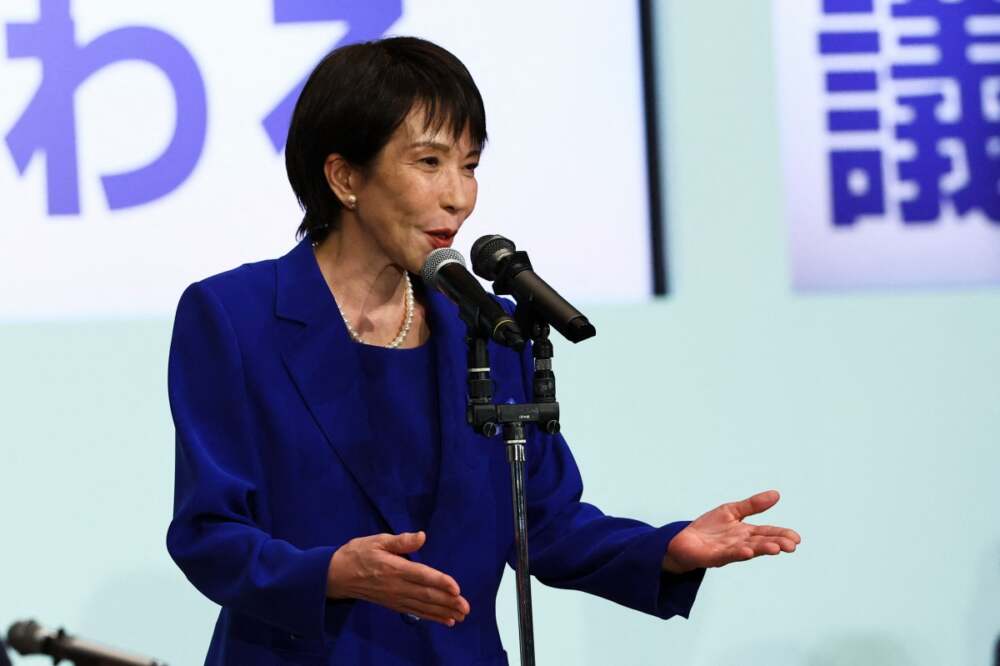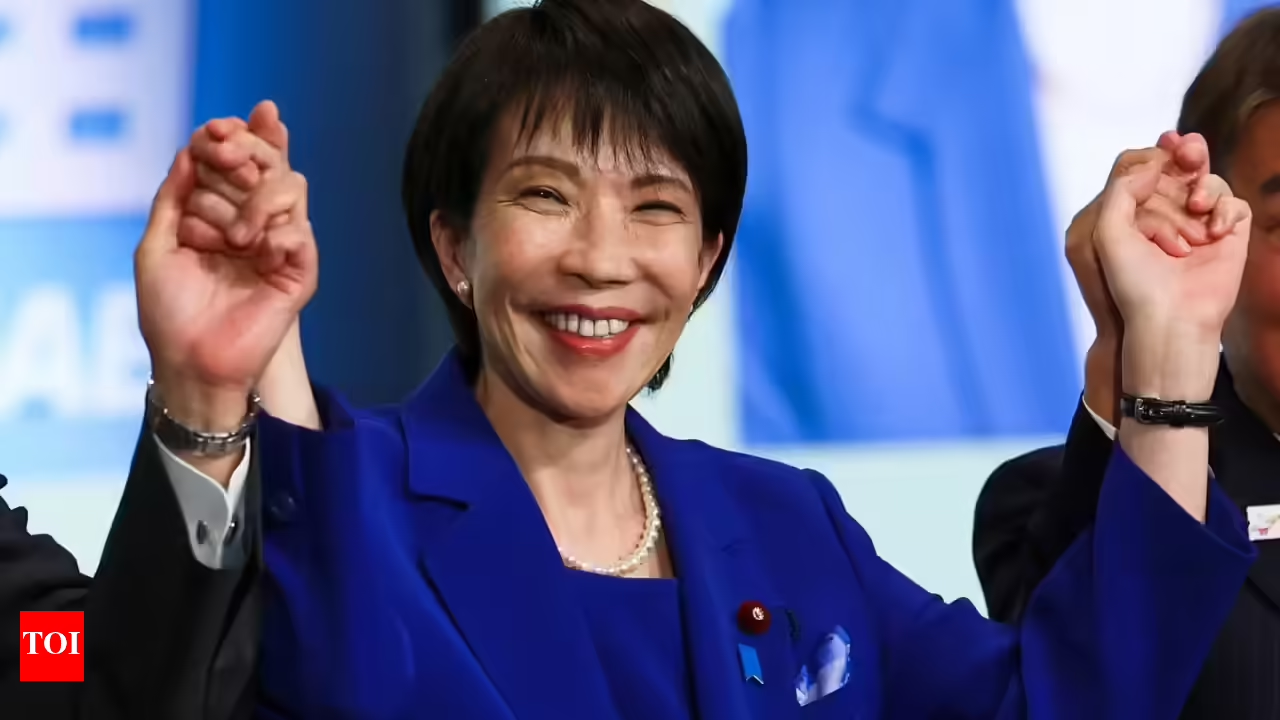Japan is on the verge of making history. The ruling Liberal Democratic Party (LDP) has elected Sanae Takaichi, a staunch conservative and longtime party insider, as its new leader — positioning her to become the first female prime minister in the nation’s history. Her ascent marks a seismic shift in Japan’s political landscape, where male leadership has dominated for decades, and where the concept of a woman at the helm of government was once viewed as improbable.
Yet Takaichi’s rise is more than symbolic. It underscores Japan’s struggle to balance tradition with transformation — to modernize governance while clinging to deeply rooted social and political hierarchies.
A Landmark Moment in Japanese Politics
At 64, Sanae Takaichi has spent years navigating the complexities of Japanese power politics. Her victory in the LDP leadership race on Saturday came after a fierce contest against former environment minister Shinjiro Koizumi, the charismatic son of a former prime minister. Takaichi narrowly triumphed in the runoff vote, backed by key conservative factions loyal to ex-premier Shinzo Abe, her longtime mentor.
Her election effectively guarantees her elevation to the prime ministership, since the LDP controls the lower house of parliament. She will replace outgoing Prime Minister Shigeru Ishiba, who announced his resignation following months of internal dissent and declining approval ratings.
When officially confirmed, Takaichi will break one of Japan’s longest-standing political barriers — becoming the country’s first female leader since the nation’s modern democratic system was established in 1947.
A Conservative with Hard Edges
Takaichi’s ideology is deeply rooted in right-wing nationalism and conservative social values. She has long been known for her hawkish stance on defense, her close ties to the late Shinzo Abe’s faction, and her unapologetic belief in a strong, assertive Japan.
In her earlier years as internal affairs minister, she championed policies designed to reinforce national identity — including patriotic education and increased defense spending. She has also advocated revising Japan’s pacifist constitution, particularly Article 9, which renounces war as a means of settling international disputes.
On foreign policy, she supports a tougher posture toward China and North Korea, while seeking to deepen cooperation with the United States and Australia through the Quad security partnership.
Her worldview contrasts sharply with the pragmatic centrism that has guided Japan’s postwar leaders. “Peace is built not by dependence, but by deterrence,” she once said in parliament — a phrase that resonates strongly with conservative voters but unsettles her liberal critics.
Economic Vision: Reviving a Stalled Nation
Beyond defense, Takaichi has proposed a new economic strategy she calls “Crisis Management Investment.” The plan focuses on strengthening Japan’s resilience by channeling public funds into sectors deemed essential for national security — semiconductors, artificial intelligence, energy independence, and biotechnology.
She argues that Japan must prepare for “a world of persistent instability,” where economic and security policies are intertwined. Her approach borrows from the logic of Abenomics but replaces its emphasis on monetary easing with targeted state-led industrial strategy.
Takaichi also supports raising wages to drive domestic consumption and curbing cost-driven inflation that disproportionately harms low-income households. Critics, however, say her vision lacks concrete mechanisms to address Japan’s mounting public debt — already among the highest in the developed world.
Economists warn that balancing fiscal responsibility with heavy state investment could become her toughest domestic test.
The Gender Paradox
While Takaichi’s appointment represents an unprecedented milestone for women in Japanese politics, her own record on gender equality is complex — even contradictory.
She has consistently opposed measures that many activists see as essential for women’s empowerment, including legislation allowing married couples to retain separate surnames and changes to imperial succession laws that would permit a woman to ascend the Chrysanthemum Throne.
Her stance stems from her conservative belief in maintaining traditional family structures and cultural continuity.
That has prompted critics to describe her as a “symbolic feminist” — a woman breaking barriers while simultaneously reinforcing the patriarchal order that limited her predecessors.
Nevertheless, supporters argue that her presence alone could reshape perceptions. “Having a woman in the top job matters,” said one LDP lawmaker. “Even if her policies are conservative, it changes the conversation in boardrooms and in homes.”
In a country where fewer than 10% of parliamentary seats are held by women, Takaichi’s leadership could still serve as an inflection point for gender representation.
Political Landscape: A Divided Mandate
Takaichi inherits a party facing both internal fragmentation and public fatigue. The LDP has governed Japan almost uninterrupted since 1955, but voter disillusionment has deepened amid economic stagnation, population decline, and corruption scandals.
Although her leadership victory was decisive, it exposed factional divides. Reformists within the party — particularly younger members — fear her nationalist agenda could alienate centrist voters. Opposition parties, meanwhile, see an opportunity to rally around gender progressivism and social reform.
Parliamentary math, however, remains in her favor. The LDP’s lower-house majority virtually guarantees her confirmation as prime minister. The question is whether she can govern effectively beyond the symbolic first months, uniting the party behind a coherent vision before the next general election, expected in early 2026.
Diplomatic Challenges Ahead
Internationally, Takaichi’s leadership comes at a delicate moment for Japan’s foreign policy. Relations with China remain tense over maritime disputes in the East China Sea, and ties with South Korea are often strained by historical grievances.
At the same time, Japan continues to play a vital role in balancing U.S. and regional interests in the Indo-Pacific. Washington has expressed cautious optimism about her victory, viewing her as a reliable security partner aligned with U.S. strategic priorities.
Yet analysts warn that her assertive rhetoric could complicate diplomacy, especially if perceived as revisionist or nationalist. How she manages these dynamics will likely define her early tenure.
Public Reaction: Optimism Mixed with Uncertainty
Across Japan, reaction to Takaichi’s impending premiership has been mixed. Some hail her as a trailblazer who shattered the political glass ceiling; others worry her leadership will reinforce the status quo.
“Her rise is historic — but it’s not necessarily progressive,” said political analyst Hiroshi Tanaka. “It’s a reminder that representation and reform don’t always align.”
Meanwhile, voters express a blend of curiosity and hope. “She’s strong and disciplined,” said one Tokyo resident. “But I want to see if she’ll listen to ordinary people, not just bureaucrats and party elders.”
Women’s groups are also watching closely. For many activists, the measure of Takaichi’s leadership will be whether she uses her power to open doors for others — not just to walk through one herself.
A Defining Moment for Japan
Sanae Takaichi’s rise to the pinnacle of Japanese politics is both groundbreaking and revealing. It exposes the contradictions of a society that reveres tradition yet craves renewal, and it challenges long-held assumptions about who can lead Asia’s oldest democracy.
Whether her tenure brings transformative policy or simply reaffirms the conservative order, it will mark a defining chapter in Japan’s modern history — one in which gender, ideology, and power converge in ways unseen before.
















Leave a Reply